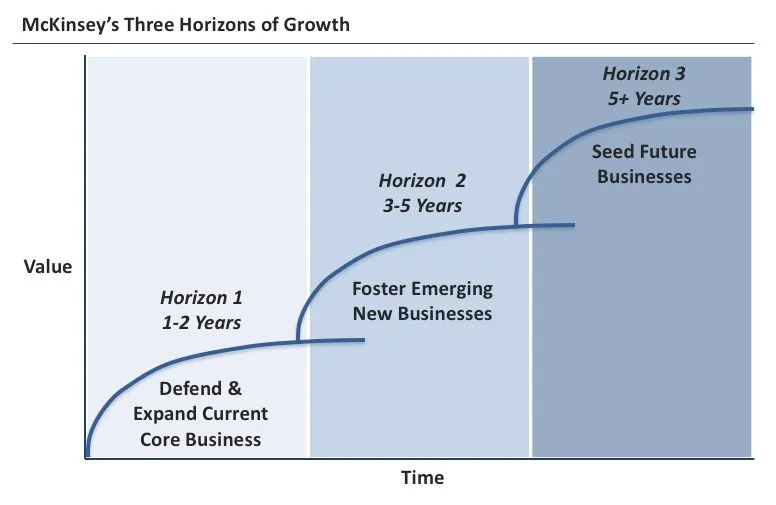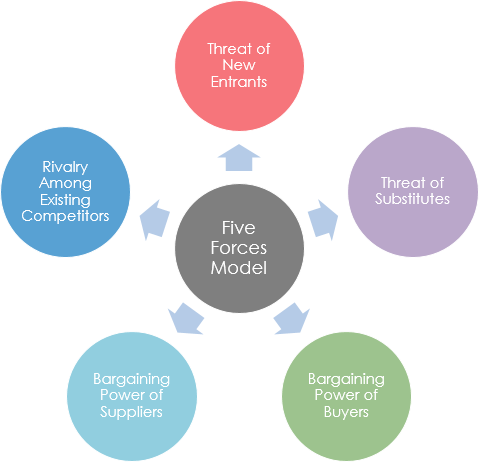Being more strategic in managing change is about being more focused on those aspects of driving change that will create the most value for the organisation. This is directly comparable to what strategy is about. Strategy is about choosing a particular path to achieve a particular set of goals, versus other paths. There are many paths and many ways to manage change and different paths may yield different results.
What are the advantages of being more strategic? Being more strategic means you are clearer in terms of the specific approach you are taking in leading change and how that translates to a particular set of results. It is not just about following a particular methodology blindly or whatever approach is ‘in vogue’.
Strategic change practitioners create greater value for the organisation. They are more able to connect with senior managers in terms of driving organisational impact and results versus being focused just on individual implementation tactics. They are also able to easily articulate why change activities are carried out and how they contribute to the overall outcomes. Moreover, they’re able to position the value of the change in the overall strategy of the organisation and why the change is important. In approaching the implementation they zoom in on the parts of the change that makes the most difference.
How does a change practitioner be more strategic?
Start with understanding and linking the initiative to the strategy
Every initiative exists to support a particular strategy that the company has created. Change practitioners need to have a good understanding of the organisational strategies, why they were created, and what they aimed to achieve. At a basic level, it should be clearly understood by all stakeholders why the initiative was created and the strategy it aims to support.
A clear grasp of how the initiative supports an organisational strategy helps the change practitioner position the size of the value delivered by the initiative. As a result, it helps with determining the focus and effort that should be devoted to and how to realise the objectives of this initiative.
Organisational strategy can also be understood using the 3 horizons model. Strategies and initiatives can fall within each of the 3 horizons.
- Horizon 1 ideas provide continuous innovation to a company’s existing business model and core capabilities in the short-term.
- Horizon 2 ideas extend a company’s existing business model and core capabilities to new customers, markets, or targets.
- Horizon 3 is the creation of new capabilities and new business to take advantage of or respond to disruptive opportunities or to counter disruption.

Most change practitioners would be involved in horizon 1 initiatives where there are immediate changes required to the business in the shorter term. However, there are also initiatives about transformation in horizon 2 concerned with building core capabilities. Horizon 3 is about building and launching new products or launching into new markets outside of the existing business. There may also be initiatives within this horizon. Understanding which horizon the initiative falls under helps with its positioning.
Improving business acumen:
Having good business acumen is critical to being a strategic change practitioner. If you do not understand how the business works then it is hard to be strategic. This is because without understanding key drivers of how the business works, it is hard to formulate the right positioning to support the change initiative in a way that supports the realisation of the strategy.
Don’t fret. There are a few focus areas that can point you in the right direction.
1. How the company makes money.
At a basic level, understand how the company is structured and how it makes money. Lay out all the various departments of the organisation. Focus on key operations of the business. This can be labelled as a value chain, or how services and products get produced and delivered to the customer. What are the key investments of the organisation? In a financial services setting the focus is on people, financial investment, and technology. In manufacturing, it could be on equipment and supply chain.
Focus on the key drivers for the company. Is the company focused on maximizing profit? Or is the focus on increasing revenue? Is there a focus on decreasing costs to increase revenue? What are the ‘big buckets’ in which cost savings can be achieved? And therefore how is your initiative supporting any of these drivers?
The critical part is to understand ‘why’ the company is focused on particular activities. There are the business-as-usual parts of the organisation focused on maintenance of the business (’keeping the lights on’), and then there are core drivers that can make or break the business and its financials. Seek to understand why particular strategies were chosen and what objectives they will help the company to achieve.
2.Competition and the market landscape.
After understanding how a company operates, the next step is to understand the landscape that it operates. A good model to be familiar with in analysing the competitive landscape of the industry is Porter’s 5 forces model. Seek to understand the interplay between the 5 forces. How do these shape the industry? As a result, how is the company positioned in the market? To be successful which forces is the company focused on managing?
Is your initiative involved in providing a better experience for customers because the landscape has been changing and customers are more demanding and have more choices than before? Is the initiative focused on launching a digital solution so that the company is not overtaken by rivals who offer better options to customers? Is the company’s profit suffering due to increased material/finance costs and therefore the initiatives are focused on containing cost? Is the program focused on improving efficiency through launching a systems solution and therefore improving customer delivery time or saving headcount?

Focus on providing value to the organisation
We know that it is not always easy to prove the value of change management. People benefits are not always tangible and easily measured. However, this does not mean that it is less important or that measurement is not valuable. In the past, there have been efforts to try and measure change management in terms of return on investment (ROI). However, this may not be the most strategic way of demonstrating the value of change management.
Where possible, always focus on creating value for the organisation, as opposed to focusing on saving costs. The ultimate superpower of change management is about creating the right organisational environment so as to fully realize the benefits targeted by initiatives. Initiative benefits may not always be in financial dollar terms but are often in the hundreds of thousands to millions in benefits.
On the other hand, a focus on cost will always be compared against other costs. You can try and argue that the cost for change management is not large, but then there are always ways to reduce the cost. Going down the path of focusing on cost can only get you so far. This is for the same reason that a company that only focuses on reducing cost will not grow. Alternatively, focus on increasing value for the organisation means targeting a much bigger piece of the pie. Here is an example of why focusing on value often means creating a lot more impact than focusing on cost.
To find out how to calculate the financial value of managing a change portfolio click here.
Adopt a logic-based approach to strategize change
To adopt a rigorous logic-based approach in determining your change approach, use the MECE framework. MECE stands for mutually exclusive, collectively exhaustive. The framework is commonly used by strategy consultants when they analyse the organisation and determine what strategies to formulate.

There are 2 aspects to using this model. The model is based on a scientific hypothesis approach to problem-solving. This means that you must always begin with a hypothesis, followed by branches that test the hypothesis. To goal is to prove or disprove the hypothesis. For example, “by open-sourcing change tactics, we will achieve a better change outcome”. Then you can draw a tree diagram that branches out the various factors that can either support or disprove this. For example, these could be the potential branches:
- The culture of the company is hierarchical and employees are not always forthcoming in openly sharing their ideas and expect to be lead
- The project has a particularly tight timeline and there may not be sufficient time to properly engage the community for various ideas
- Program sponsor and key stakeholders already have a fixed idea of how they want to implement the change, and therefore may not be open to other ideas
- The organisation does not have a history of undergoing significant change and therefore employees may not understand the effort required to drive and sustain the change

From each branch, there can be subbranches that call out the evidence or reasoning for each branch. In this case, there seems to be strong logic that this hypothesis is false. Therefore, this is not a good strategy to use for this initiative.
Use the MECE approach to strategize your change approach. A lot of practitioners tend to prefer to follow standard change management models and methodologies. This may be OK as a reference, or a reminder. However, an effective change approach that is strategically focused on what the organisation needs must be developed using a logic-based approach. One that is tailored and designed specifically for the unique situation that the company is in currently.
Your change strategy or approach should always be unique to the requirements of the organisation. It should never be a ‘copy’ of another initiative because no two initiatives are ever completely the same. There will be tactics that are similar across initiatives, such as engagement approaches utilised or impact assessment design. However, the change strategy needs to call out what is unique about this initiative and how the change strategy is specifically designed for this situation.
Build change measurement and tracking
Business strategy can only be successful if it can be measured. Without measurement, there is no way of knowing if the objectives are achieved or when to abandon the strategy and adapt/tweak as required. The same applies to change strategy and execution. The change strategy must come with a set of metrics in order to gauge to what extent the strategy is successful or not.
Be aware of not creating too many metrics that will lead to significant effort required to capture and report the metrics. Balance effort and outcome in the tracking and reporting of change management metrics. Having anywhere from 3-5 metrics is a good number to target. When you start to have more metrics, the effort required may be too overwhelming.
To read up more about measuring change click here.
Application of strategic approaches throughout the project lifecycle
Let’s go through an example of how strategic change approaches can be applied throughout the project life cycle.
Scoping – Strategic approach to look widely at the effort involved
Typically during this phase of the project, change practitioners may tend to focus only on the operational aspect of scoping out the resources required to support the project and the level of impact on the organisation. However, it is also important to be clear about the strategic importance and positioning of this initiative.
In scoping out the change management effort required to support an initiative we need to understand the strategic importance of the initiative and where it stands compared to other initiative and organisational focus areas. Key questions to consider include:
- What is the priority level of the initiative
- What strategy is it supporting? What’s the level of strategic importance?
- What’s the right level of focus to support this initiative, balanced against other organisational priorities? For example, what else would impacted stakeholders be focused on during the impact period, and therefore how do we support having the right priorities? (i.e. the right level of ambidexterity)
- Are there opportunities to integrate the roll out of this initiative with other initiatives to simplify focus, organisational effort and aid change adoption (e.g. this could be done at a communications or learning roll-out levels)
Impact assessment – Utilise strategic analysis to understand business impact
In analysing the change impact of the initiative, a strategic approach means a depth of understanding of how the business is impacted by the initiative and what benefits will mean to the business. Each part of the business by definition has different focus areas, and the business impact will be different as a result. To conduct a strategic analysis of the impact of change undergoes the following:
- What is the business environment including partners, customers and suppliers? How will the change influence the dynamics of this environment?
- How will the work and value of the business unit be altered as a result of the change? Conduct this analysis at multiple layers of the business unit to tease out the implications?
- Will there be financial, resourcing, time, cost or effort impacts on the business unit or stakeholder group?
- Will the business unit’s own focus areas or strategies be altered as a result of the change? Will its metrics, tracking and reporting be altered as well?
Change strategy formulation
In formulating the change strategy for the initiative adopt the MECE approach as described previously. You may need to formulate different hypotheses and test them before arriving at the one that is the most applicable to the organisation. Feel free to share your tree branch with your stakeholders to take them through how the change strategy is formulated. Involve them to ‘test’ the assumptions as required in the formulation.
Systems and portfolio views of the organisation
A key part of strategic change management is approaching change from a holistic and ‘systems-based’ perspective. A change project should not be viewed in its isolation but as a piece of the overall system. This means you need to understand the potential relations of this initiative with other initiatives in supporting the same strategy, and what other initiatives are focused on by the impacted business units. Having a portfolio-level visibility of the various initiatives and their relative impacts on the organisation is a key capability to support planning and decision making. This also helps you to better position or clarify your initiative compared to other focus areas.

Strategic capabilities
Different organisations and business units will have different levels of capabilities in leading, executing, and embedding change. Within the timeline and resource challenges of one initiative, it is not always possible to address all the various aspects of capability gaps. In fact, you may even face multiple capability gaps that may potentially derail the project.
Conduct a strategic capability analysis to assess which capabilities are core and critical to the success of the project. Assign weighting to each capability in terms of importance and any existing gaps. Use this analysis to formulate the top one or two capabilities you may want to focus on supporting the business to ensure the rollout is successful. Strategy is about focus and making bets. By spreading your efforts too thin you might not be able to close any of the capability gaps.






